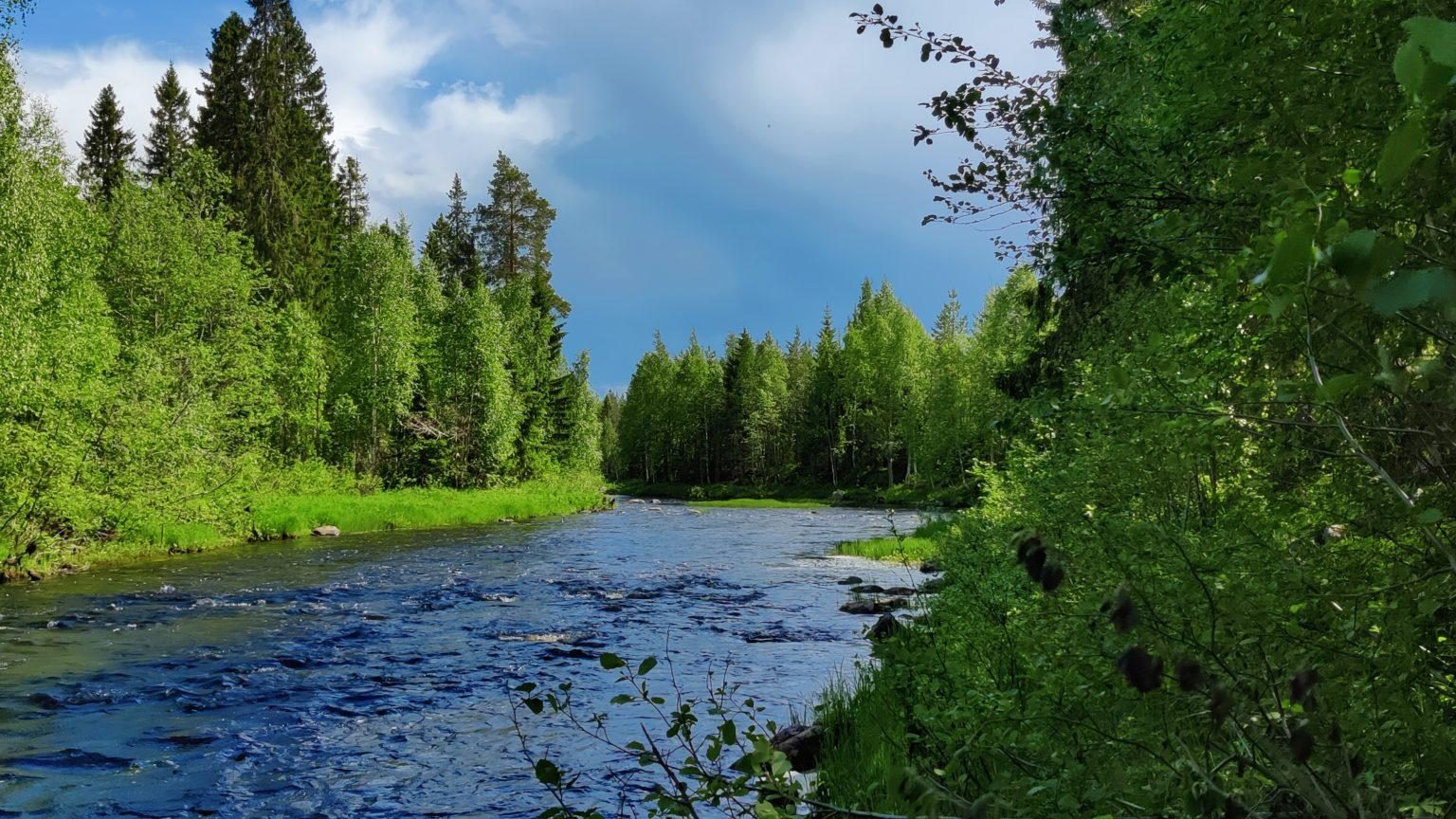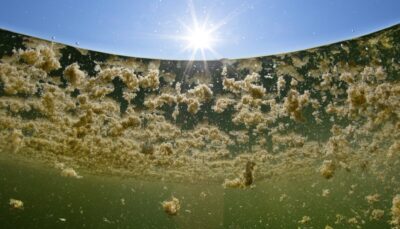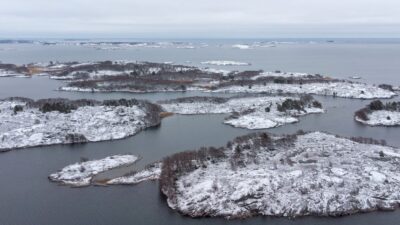Tilanjoki catchment area plan aims for a 25 percent reduction in the phosphorus load from forestry

More information
Forestry in peatlands is a significant source of nutrients in waterways, particularly in Ostrobothnia and Kainuu, where peatland forests abound. Earlier, drainage maintenance in particular was seen to be an important nutrient load source, but recent research indicates that eutrophicating nutrients enter the waterways also from older drainage areas, and do so for decades. With catchment area planning, we can recognize the most significant load sources and solutions that reduce harm to the environment.
VALVE Forest Project creates a catchment area plan for the Tilanjoki river
The Tilanjoki river catchment area is the pilot site for the joint project of the John Nurminen Foundation and Metsähallitus, aiming to promote waterway-friendly forestry on peatland, and, with the same effort, to reduce the nutrient load that ends up in the Baltic Sea. Tilanjoki is located in Utajärvi, and it is part of the Kiiminkijoki river’s Natura waterway; so far, it’s water quality has maintained an excellent status. The river does, however, flow mostly through thick, drained peatland, and forestry in the area is its main load source.
The Tilanjoki catchment area plan was finalized in May 2022 (in Finnish).
Great need for planning on catchment area level
“The Tilanjoki area is efficiently used for forestry, and there is a clear need for waterway management planning on catchment area level”, explains Aino Hyttinen, author of the plan, and forest advisor at the Rokua-Paljakka forest management association. “Forest owners were very much involved in all phases of creating the plan, from on-site visits to the final fine-tuning of the plan. In this way, we made sure that the end result was a plan that everybody felt was feasible”, says Hyttinen.
The catchment area plan noted that loads to the waterway were mostly due to the so-called legacy effect of drainage, where peat decomposes in old drainage areas, causing the load. As for future forest management measures, fertilization in particular is estimated to be a source of nutrient loads. Large-scale drainage maintenance, on the other hand, is not planned for the area. Also, some sites that are prone to erosion were identified.
“Planning of the Tilanjoki catchment area is particularly interesting because the area features state-owned multiple-use forests, protected mires, and privately owned lands. With planning that covers the entire catchment area, and cooperation with the land owners, waterway protection measures can be implemented in sites where they are most useful”, says Anna Saarentaus, Project Manager at the John Nurminen Foundation.
Wide array of load-reducing measures
The plan, which has just been completed, presents a palette of various water protection measures, to be implemented on both state- and privately-owned lands. The water protection measures were designed to curb, in particular, the long-term nutrient loads from drainage.
Riparian buffer zones and peak runoff control, which slows the waterflow in ditches, were assessed to be the most efficient ways to curb nutrient loads. It is recommended that the efficiency of sediment basins, built in connection with earlier drainage work, is improved with timber-based purification, i.e. bundles of wood sunk in the basins. Peak loads from future forest fertilization can be reduced by implementing the fertilization in the span of several years.
When the time frame is longer, water protection benefits can be achieved through restoration and returning waters.
Apart from nutrient loads, planning focused on the valuable habitats of the area. Two flooded forests, with plenty of decomposing wood, were identified by the river; these could very well become environmental subsidy sites, and not be used for forestry. From old aerial photographs, some old beds of streams, also options for restoration, could be identified.
From plans to implementation
“The implemented measures will be discussed with landowners so that the goals of water protection are compatible with the other goals of the owner. The waterway protection measures of the project will not lead to any costs for the landowner, and losses of income from wood sales, if any, will also be compensated”, says Anna Saarentaus on the next phase of the project.
Metsähallitus oversees project implementation on lands owned by the state. “Amongst other things, we intend to restore peatlands with poor growth, and use them for overland flows by directing waters from ditched areas to them. Also, the possible load peak from planned forest fertilization in the Tilanjoki area is levelled out by implementing the work in the span of several years”, explains Marjaana Ahokumpu, environmental specialist at Metsähallitus.
Water quality monitoring will also commence during the summer, allowing us to observe how the measures are impacting the nutrient load of Tilanjoki.
The waterway-friendly forestry model developed by the VALVE Forest Project can in the future be utilized in other catchment areas where peatland is dominant. Most important benefits can be reaped in Ostrobothnia, Southern Lapland and Kainuu, where peatland constitutes a large share of the forest area.
The VALVE Forest project seeks to find cost-efficient, discharge-reducing solutions and practices for waterway protection in peatland forestry, achieved through the cooperation of forest owners, and planning done separately for each catchment area. The project is implemented by the John Nurminen Foundation, Metsähallitus, and the forest owners of the Tilanjoki river catchment area. The project is financed by the John Nurminen Foundation, Metsähallitus, the Ministry of Agriculture and Forestry, and the Ministry of the Environment in connection with the project subsidies for water management in agriculture and forestry. The subsidy is managed by the North Ostrobothnia Centre for Economic Development, Transport and the Environment.



